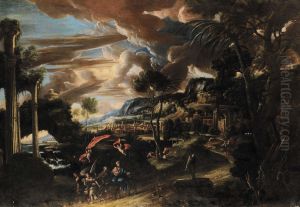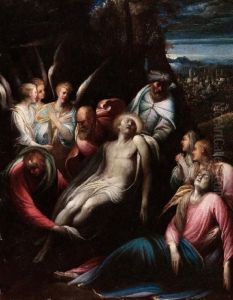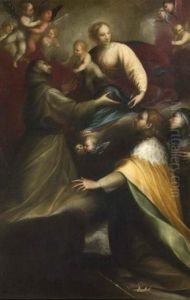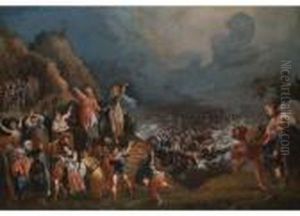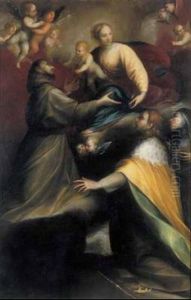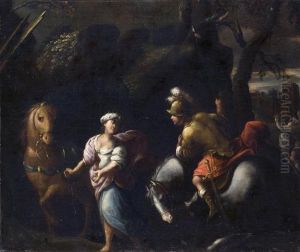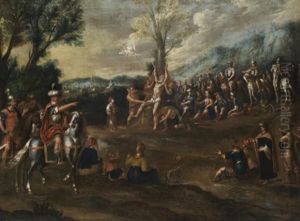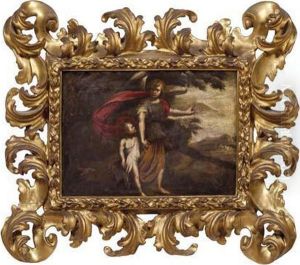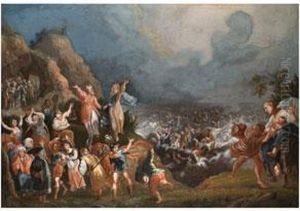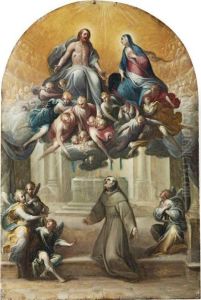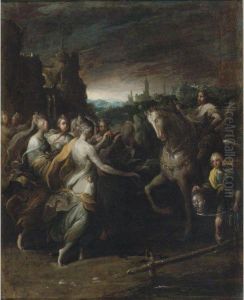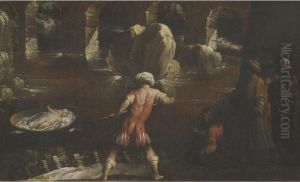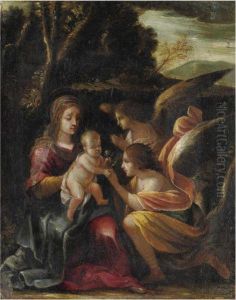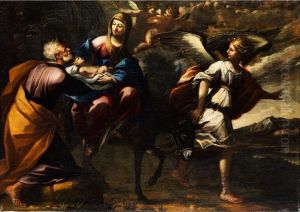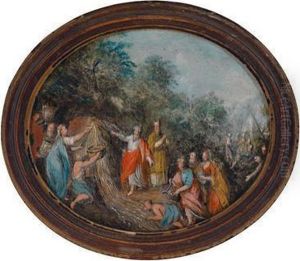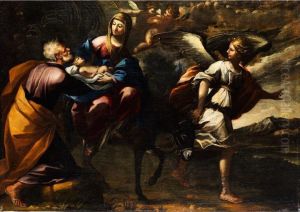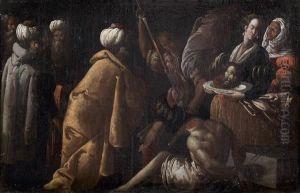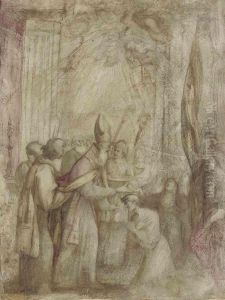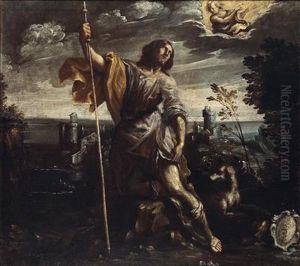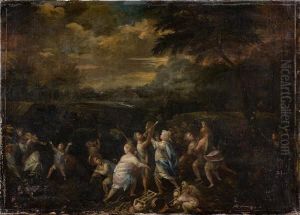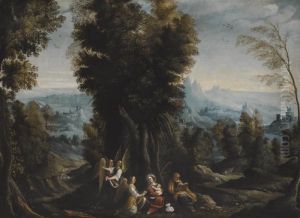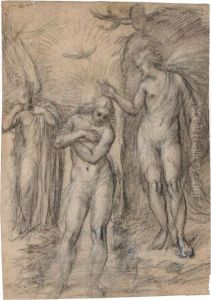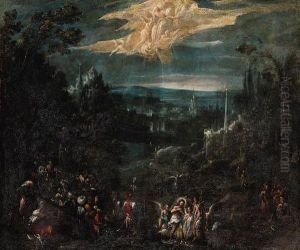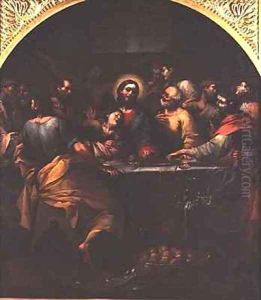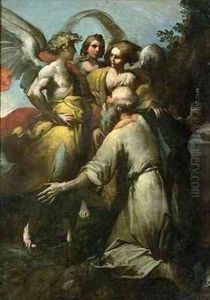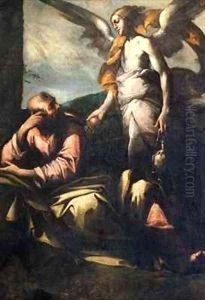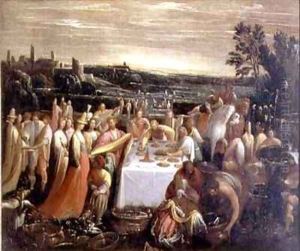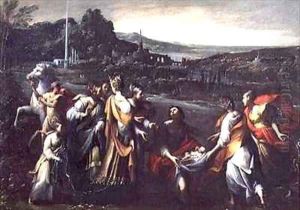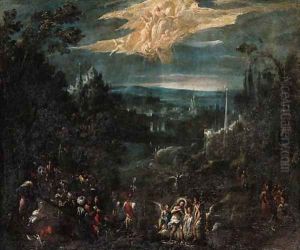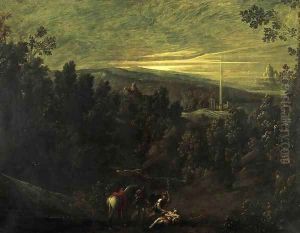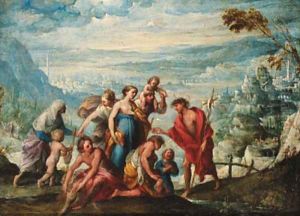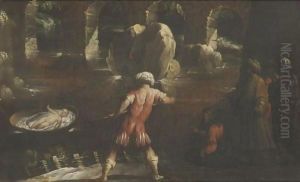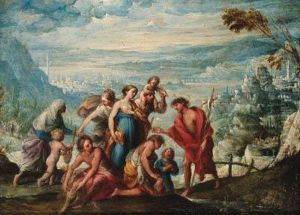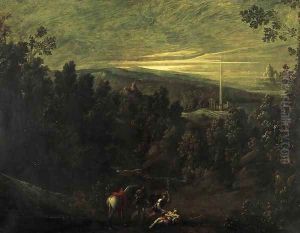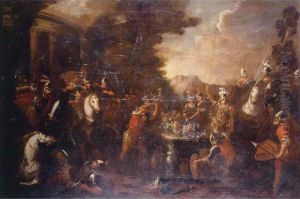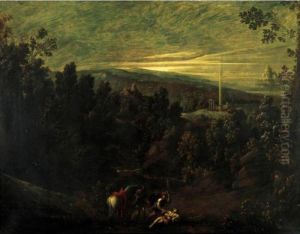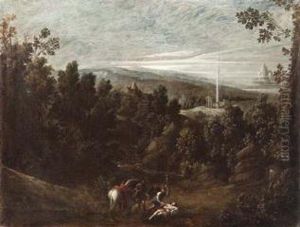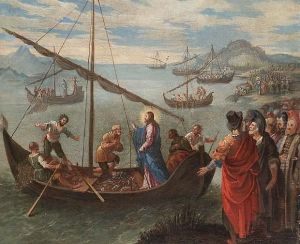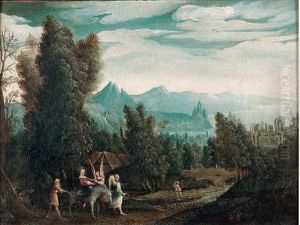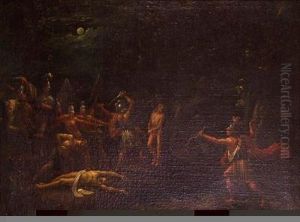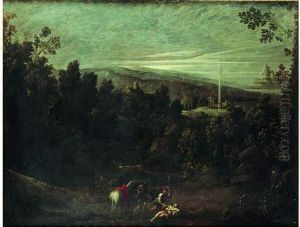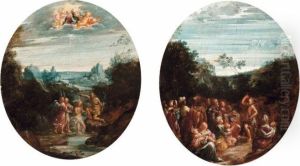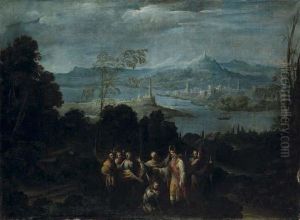Giovanni Andrea Donducci (see MASTELLETTA) Paintings
Giovanni Andrea Donducci, also known as Mastelletta, was an Italian painter of the Baroque period, born in 1575 in Bologna, Italy. He was initially a pupil of the Carracci at their academy in Bologna, which was one of the most progressive art schools of its time, known for a style that blended naturalism with the dynamism of the High Renaissance and Mannerism.
Mastelletta's style, however, diverged significantly from his teachers. He developed a distinctive style characterized by eerie and often grotesque figures, set in dark, turbulent landscapes. His works often include mystical and nocturnal scenes, with a strong emphasis on the play of light and shadow, a technique that reflects the influence of the Caravaggisti – followers of the famous Italian painter Caravaggio, known for their dramatic use of chiaroscuro.
Throughout his career, Mastelletta worked on various commissions, including altarpieces and frescoes for churches, as well as mythological and allegorical scenes. Despite his deviation from the Carracci classicism, he did gain recognition for his work in his lifetime. His paintings can be found in many collections across Italy, particularly in Bologna, where he spent most of his life.
Mastelletta's influence extended to his pupils, and through them, his distinct style contributed to the evolution of Bolognese painting in the 17th century. He continued to paint until his death in 1655. Although not as widely known as some of his contemporaries, Mastelletta remains a significant figure in the study of Baroque art, noted for his unique contributions to the era's stylistic diversity.
